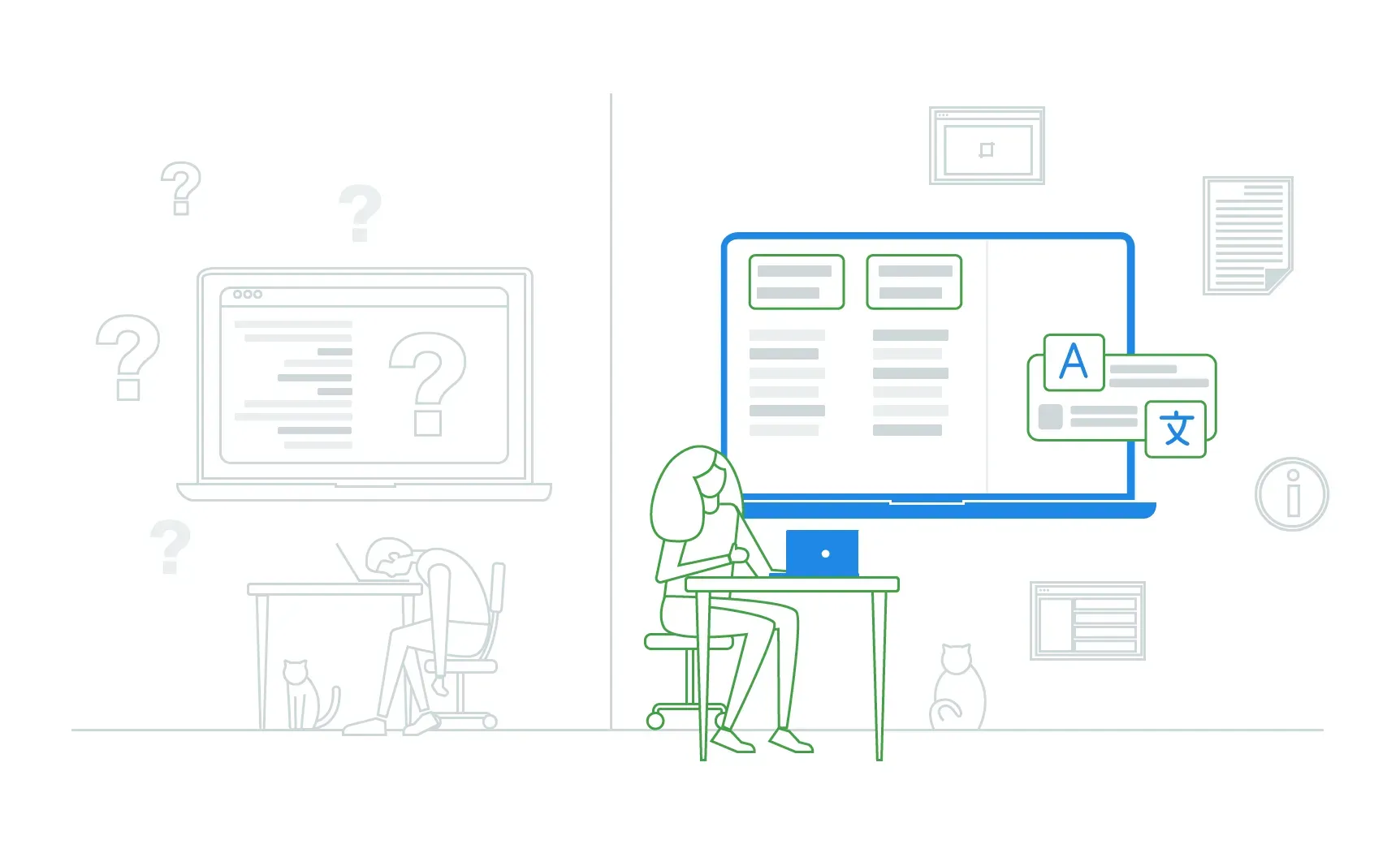If you deal with localization and expect accurate translations, remember – context is the king. The more context you give your contributors, the better translations you get. It seems like a clear and simple idea, yet often translators are left to work out of the context. As a consequence, there are lots of back-and-forth interactions and missed deadlines you could avoid.
To stay agile during localization, invest some time and provide context before the translation starts. This will pay off in the long run. This article includes a brief overview of all the ways to provide context in Crowdin. So that you can always be sure your translators have an excellent work environment.
Crowdin In-Context
Crowdin In-Context is used to translate web applications. It provides an overlay for the app and enables translators to work in real-time. In-context localization is connected with the actual project created in Crowdin which contains the translatable files. Translators work as if in the real app interface and can preview the translations they make. Translations are stored within your Crowdin project, and you decide when to pull them back to your application.
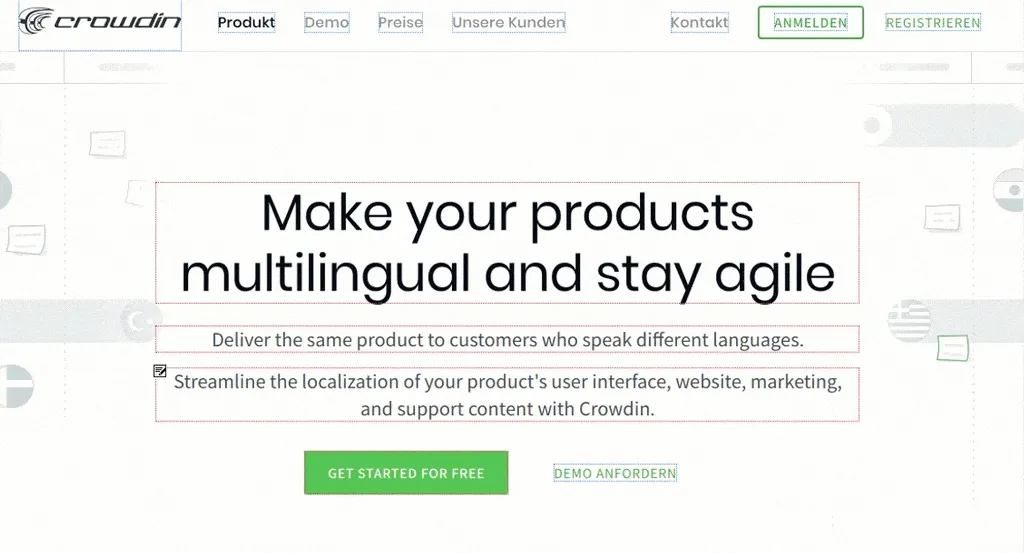
To integrate Crowdin In-Context, ask your developer to add a one-line Javascript snippet to your website. Learn more about Crowdin In-Context localization.
WYSIWYG for DOCX, HTML, MD, TXT files
In the Editor translators and proofreaders work with the separate strings that are arranged in a list. One string might not always have a relation with the subsequent one and translators might need to check the whole text for reference. If you upload DOCX (NEW!), HTML-based, TXT, and MD-based files to the Crowdin, translators will be able to preview those files directly in the Editor. They will also see pictures, tables, columns, lists, and text the document might contain.
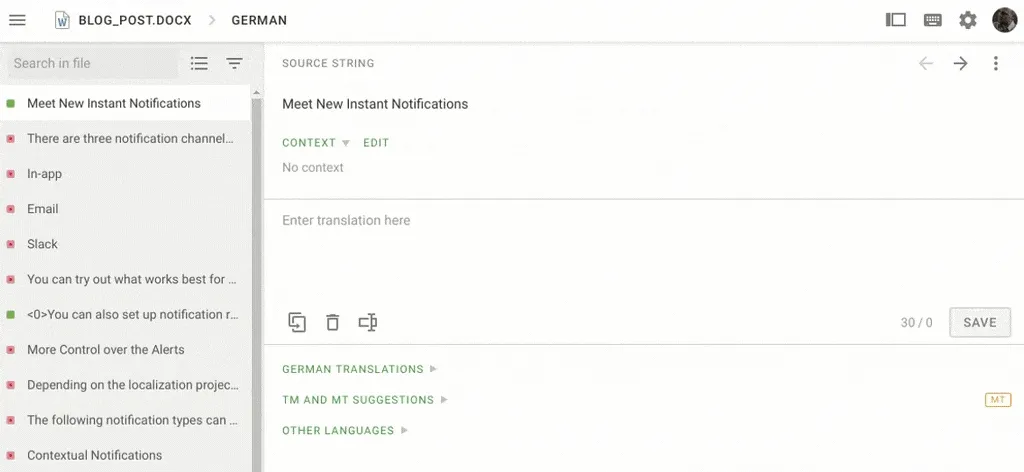
Context for a Separate String in the Editor
Along with the visual previews, the descriptive context for translators can also be added to each string separately. The file formats such as – Android XML, iOS strings, Chrome JSON, YAML, RESX, PO (Gettext), QT TS, XLIFF, CSV/XLSX have a special node for context data. Thus, you will be able to add some context to a string while generating your source files.
This information will be shown to the translators in the Editor. Right below the source string they currently work on. In this field, translators can also click Request to ask for more context, as well as create an issue Lack of contextual information. Project managers will immediately know the explanations are required.
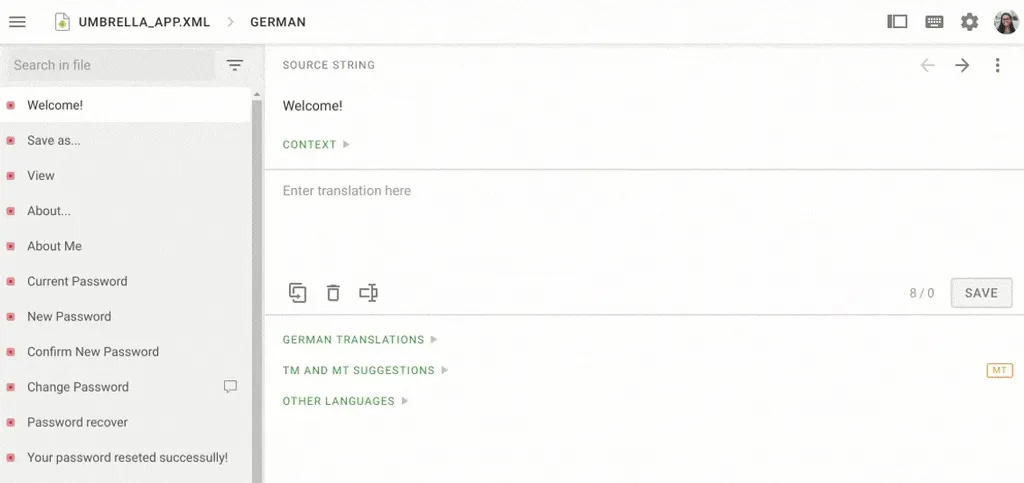
You can also edit the context for a string manually. It can be a text, link to a guide or explanatory article. If needed, you can also indicate the maximum length of symbols the translation of a particular string can have. The translator won’t be able to save the translation that exceeds the symbol limit.
Uploading and Tagging Screenshots
If a string is tagged on a particular screenshot, translators will see it in the context field under the source string in the Editor.
To tag screenshots, you will need to have both source files and screenshots uploaded to your Crowdin project. Afterward, you can tag each screenshot either automatically or manually.
Learn more about using screenshots in Crowdin projects.
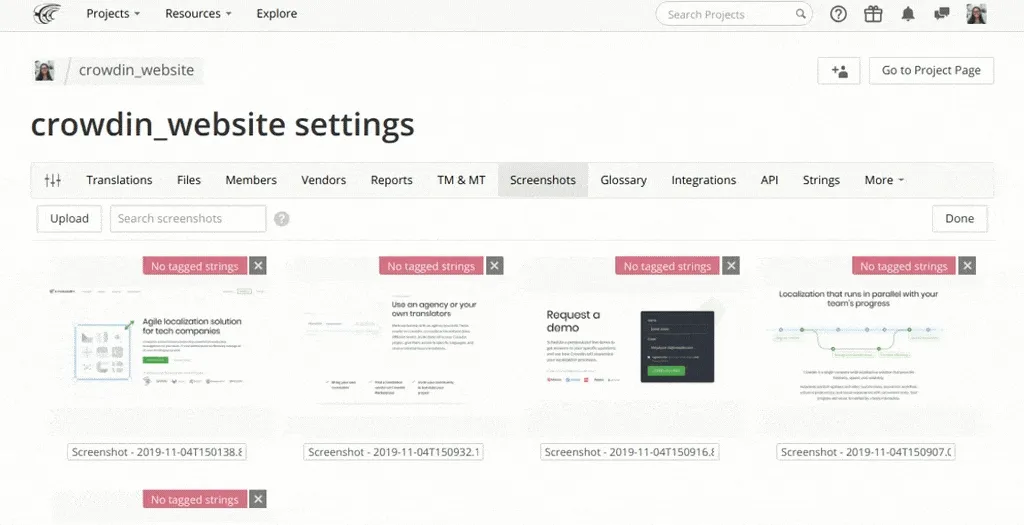
The More Context the Better
Context makes the translation process less challenging and helps translators interpret the source accurately. You, in return, get translations of better quality faster and decrease the number of context-related issues you would need to solve.
Check the projects you manage and see what you can do to make the life of your translators easier and speed up the localization of your product.
Style Guides and References App
The Crowdin Style Guides and References app provides tools for sharing information with translators, allowing the creation of linked style guides for specific projects. Including files or web links offers additional context for translators.
To get started, install the app, access your organization Settings or Profile Settings, and follow the steps to create a style guide or attach reference materials. Provide clear materials to simplify the understanding of context, specific words, and writing styles for translators. Translators will use these resources, contributing to the delivery of accurate and higher-quality translations.
TL;DR: Context is super important. There are several ways you can provide it to your translators in Crowdin.
Localize your product with Crowdin
Iryna Namaka
Iryna Namaka has vast experience in content creation for different spheres and different tech products. She loves to create a clear and consistent brand voice for products that are used globally.
